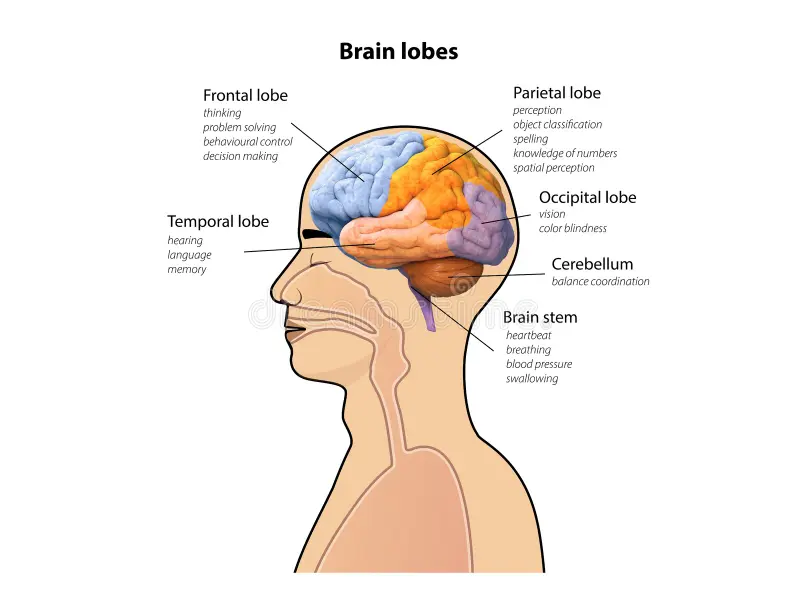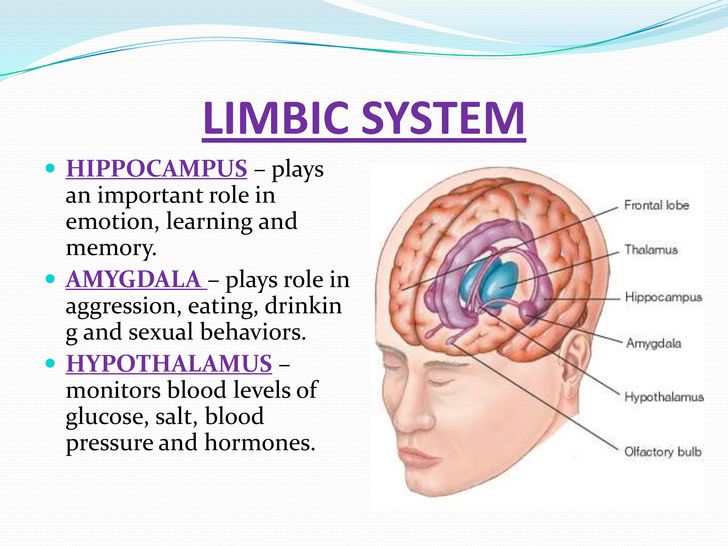
The limbic system is one of the oldest structures of your brain. It produces natural instincts that your ancestors used to survive by triggering behaviors needed to:
– Eat and drink.
– Reproduce.
– Care for young.
– React to surroundings (fight or flight response).
There are many components to your limbic system that give it a lot of responsibilities. For example, it helps manage your memories and helps you learn from them. It also helps keep you stimulated and motivated. The connection between your physical and emotional well-being is why the limbic system is also known as your emotional nervous system.
For example, the limbic system is involved when you need to eat. You’ll recognize your limbic system in action when you feel pleasure while eat certain foods. The limbic system is also responsible for increasing your blood pressure when you feel emotional stress.
Higher mental function occurs when multiple components of your brain work together to help you complete a task. You use higher mental functioning when you speak, remember, control your emotions, plan or make decisions, for example. The components of your limbic system work together with other brain regions so you can attain higher mental functioning every day.
The main functions of the limbic system include processing and managing your:
- Emotions.
- Behaviors.
- Motivations.
- Memory.
- Autonomic nervous system (heart rate, blood pressure, body temperature).
The limbic system helps control your emotions and behaviors. It manages your actions based on what it learns from your environment. It takes in information, processes it, learns from it and reacts. It can help you regulate:
– How you feel and respond to certain situations or stimuli (like your senses).
– Hunger and thirst.
– Pain and pleasure responses.
– Sexual arousal.

The word “limbic” comes from the Latin word “limbus,” which means “border.” When referencing the limbic system, this refers to the location of the components that sit on the border above your brainstem and underneath your cerebral cortex (the outer layer on the top of your brain).
There are four main structures of the limbic system:
- Hypothalamus: The hypothalamus produces hormones, helps you sleep, and manages your mood, hunger and thirst, sexual arousal, blood pressure, body temperature and heart rate.
- Amygdala: The amygdala plays a role in how you experience emotions and feelings (like anxiety, anger and fear), memory and social interpretations (information about others).
- Hypothalamus: The thalamus processes sensory information (hearing, taste, sight and touch) and helps with memory, planning and emotions.
- Hippocampus: Your hippocampus is responsible for your ability to form new memories.
Your sense of smell comes from your olfactory bulb, which isn’t part of your limbic system. Many of your other senses are processed through signals to your limbic system so your body can react to them. Your sense of smell causes you to recall memories and certain emotions related to the smell, which directly contributes to the function of your limbic system.
Almost all mental health conditions and conditions that affect your memory involve your limbic system. Common conditions that affect your limbic system include, but aren’t limited to, the following:
– Alzheimer’s disease.
– Anxiety disorders.
– Depression.
– Post-traumatic stress disorder (PTSD).
– Schizophrenia.
– Stress.
– Substance use disorder (SUD).
The following symptoms may happen as a result of a condition affecting part of your limbic system:
– Mood changes (irritability, anger, fear, sadness, etc.).
– Memory loss.
– Too much or too little sleep.
– Behavioral changes.